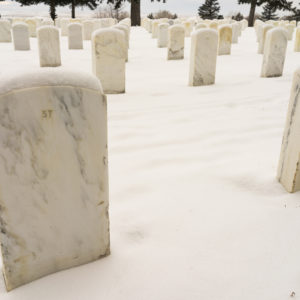For much of my adult life I have collected memorial statues — not in my backyard or basement, but in my memory. As a young boy I saw the statues of Abraham Lincoln and Thomas Jefferson in their Washington memorials, but the first statue I collected by diverting my path and reading the often-faded plaque that adorns most such statues portrays Thomas Meagher astride a horse in front of the Montana capitol. Even after the recent publication of Timothy Egan’s marvelous account of Meagher’s checkered past in “The Immortal Irishman,” few Montanans have ever heard of him. But there he is, and has been since 1905.
Another early addition to my collection is on the Midway Plaisance on Chicago’s south side. Having repeatedly walked past this larger-than-life equestrian statue atop a large granite pedestal, I decided one day to learn the identity of the rider frozen in bronze. It is a Blanik Knight, the mythical guardians of Czechoslovakia. The monument honors Thomas Masaryk, the founder and first president of that nation and a former member of the University of Chicago faculty.
I don’t know if Masaryk also had a checkered past, but I’m confident that few of the tens of thousands of students who have studied at Chicago since the monument was dedicated in 1955 have any idea who the monument memorializes. That’s the way it is with most monuments. People walk past everyday without a thought for who or what is being commemorated.
Not that they don’t appreciate them as works of art but, with the exception of easily recognized figures like Lincoln and Jefferson, one must stop and read a few lines to know who is portrayed. Understanding why they have been memorialized usually requires some research, which now can be accomplished instantly thanks to Google.
As a collector I am both puzzled and worried by the current spate of offended objectors to statues from Charlottesville to Seattle. Puzzled at the widespread injury claimed to be inflicted by monuments that have stood in near anonymity for decades. Worried because I will have fewer to collect if they are removed, and more so because I had thought only tyrants find it necessary to erase history.
There is a better way. When I was a kid we often visited what was then called Custer Battlefield, not too far off the route to my grandparents’ home in eastern Montana. At that time the hillsides were dotted with white stones, usually without names, indicating where 7th Cavalry soldiers had fallen. George Armstrong Custer, whose mission was to exterminate Indians who refused to move to a reservation, had special recognition.
These remembrances of Custer and the 267 soldiers who died that fateful day in June 1876 remain today as they were in my youth. But the name has been changed to Little Big Horn Battlefield National Monument and over the last couple of decades a moving memorial to the several tribes attacked by Custer has been added, along with markers bearing the names of some of the Indians who fell, in one case, “while defending the Lakota way of life.” The National Park Service has performed well its historic preservation mission at the Little Big Horn.
A few years ago our family visited another battlefield in Tennessee. Any visit to a Civil War battle site is a wrenching experience. The human suffering endured on both sides is beyond comprehension. At Shiloh the rows of gravestones memorializing the Union soldiers who perished seem endless. But where, we wondered, are the Confederate dead buried? In a mass grave memorialized only by small monuments erected by the former Confederate states.
My wife, thinking no doubt of our then teenage son, was dismayed that these sons of southern mothers, few of whom were slave owners and most of whom fought only from pride and a sense of civic duty, are not acknowledged as individual human beings. It is not surprising that the Union would be loath to honor their enemies of four years, but a century and a half later why perpetuate the lie that these boys and men never existed?
Rather than destroying statues commemorating people and events earlier Americans valued, we should build new monuments that express what we value today. We should follow the lead of the National Park Service at Little Big Horn by erecting statues of slaves, Japanese interns, suffragettes, Sacajawea, Matthew Shepard, even Steve Jobs and Mark Zuckerberg and, yes, the southern boys who died at Shiloh. The list of worthy candidates is long.
Future generations, at least those who are paying attention, will learn what mattered to us. Not to mention possible new acquisitions for my collection.

